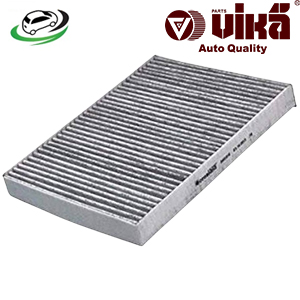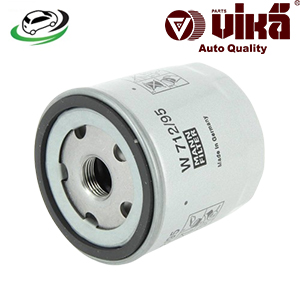-20%
Get Oil Filter Assy Audi A3/Q2/Q3 / VW Tiguan/Arteon/Golf/Touran 04E115561H
Oil filters are critical components in maintaining the health and performance of an internal combustion engine. They serve the crucial function of removing contaminants from the engine oil, ensuring that it remains clean and capable of lubricating the engine effectively. This prevents wear and tear, reduces the risk of engine damage, and extends the overall lifespan of the engine. Understanding the function, types, maintenance, and common issues related to oil filters is essential for vehicle owners and mechanics.
Function of Oil Filters
- Contaminant Removal: The primary function of an oil filter is to remove impurities from the engine oil. These contaminants can include dirt, metal particles, soot, and other debris that can accumulate in the oil over time.
- Lubrication Maintenance: By keeping the oil clean, the filter ensures that the engine components are properly lubricated. This reduces friction and wear, which is vital for the smooth operation of the engine.
- Engine Protection: Clean oil prevents sludge buildup and minimizes the risk of engine parts becoming damaged or worn. This is essential for maintaining engine performance and longevity.
- Optimal Engine Performance: A well-functioning oil filter helps maintain the viscosity and quality of the oil, which in turn ensures optimal engine performance and fuel efficiency.
Types of Oil Filters
- Primary (Full-Flow) Filters: These are the most common type of oil filters. They filter all the oil that passes through the engine, removing large particles and contaminants to protect the engine.
- Secondary (Bypass) Filters: These filters clean a small portion of the oil at a time, capturing finer particles that the primary filter may miss. They provide additional filtration and help extend the life of the engine oil.
- Cartridge Filters: These filters consist of a replaceable cartridge that fits into a permanent housing. They are easy to replace and environmentally friendly, as only the filter element is disposed of.
- Spin-On Filters: These are self-contained units that screw onto the engine. They are simple to install and replace, making them a popular choice for many vehicles.
- Magnetic Filters: These filters use magnets to attract and hold metal particles in the oil. They are often used in conjunction with other types of filters for enhanced filtration.
- Synthetic Filters: Made from synthetic materials, these filters offer superior filtration efficiency and durability compared to conventional filters. They are especially effective in high-performance and synthetic oil applications.
Signs of a Dirty or Failing Oil Filter
- Decreased Oil Pressure: A clogged oil filter can restrict oil flow, leading to lower oil pressure and potentially causing engine damage.
- Noisy Engine: If the oil filter is not functioning properly, the engine may produce unusual noises due to increased friction and lack of proper lubrication.
- Dirty Exhaust: Excessive smoke or dark exhaust fumes can indicate that the oil filter is not effectively removing contaminants from the oil.
- Oil Leaks: A damaged or improperly installed oil filter can cause oil leaks, which can be seen as oil spots under the vehicle.
- Engine Overheating: Insufficient oil flow due to a clogged filter can cause the engine to overheat, leading to potential damage and decreased performance.
Maintenance and Replacement
Regular maintenance and timely replacement of oil filters are crucial for maintaining engine health and performance. Here are the steps to follow:
- Regular Oil Changes: Change the oil and oil filter at the intervals recommended by the vehicle manufacturer. This is typically every 3,000 to 5,000 miles for conventional oil, or 7,500 to 10,000 miles for synthetic oil.
- Use Quality Filters: Always use high-quality oil filters that meet or exceed the specifications set by the vehicle manufacturer. Using inferior filters can compromise engine protection and performance.
- Check for Leaks: Regularly inspect the oil filter and surrounding areas for any signs of leaks. Tighten or replace the filter if necessary to prevent oil loss and contamination.
- Follow Manufacturer Recommendations: Adhere to the guidelines provided in the vehicle’s manual for oil filter maintenance and replacement. This ensures optimal engine protection and performance.
Replacement Procedure
- Prepare the Vehicle: Park the vehicle on a level surface and allow the engine to cool. Place a drain pan under the oil filter to catch any oil that spills during the replacement process.
- Remove the Old Filter: Use an oil filter wrench to loosen and remove the old oil filter. Be cautious as some oil may spill out when the filter is removed.
- Clean the Mounting Surface: Wipe the mounting surface on the engine with a clean cloth to remove any debris or old gasket material. This ensures a proper seal for the new filter.
- Lubricate the New Filter: Apply a thin layer of clean engine oil to the gasket on the new oil filter. This helps create a good seal and makes it easier to remove the filter during the next oil change.
- Install the New Filter: Screw the new oil filter onto the mounting surface by hand until the gasket makes contact with the engine. Then, use the oil filter wrench to tighten it an additional three-quarters of a turn.
- Refill with Oil: Refill the engine with the recommended type and amount of oil. Check the oil level with the dipstick and add more oil if necessary.
- Check for Leaks: Start the engine and let it run for a few minutes. Check around the oil filter for any signs of leaks. If there are no leaks, turn off the engine and check the oil level again, topping off if needed.
Common Issues and Troubleshooting
- Incorrect Filter Installation: If the oil filter is not installed correctly, it can cause leaks or inadequate filtration. Ensure the filter is properly tightened and the gasket is seated correctly.
- Using the Wrong Filter
Follow us on Facebook for more parts.



